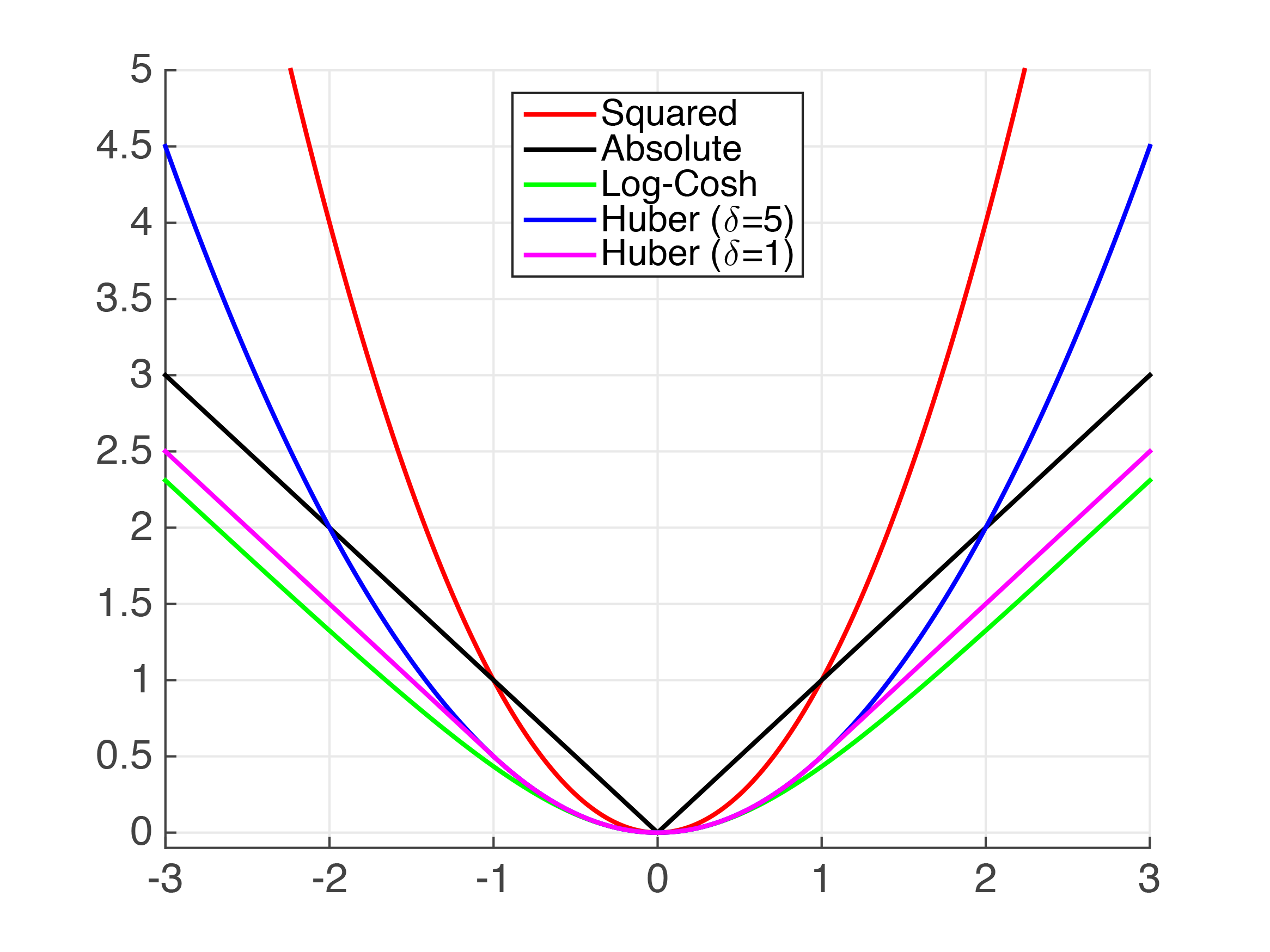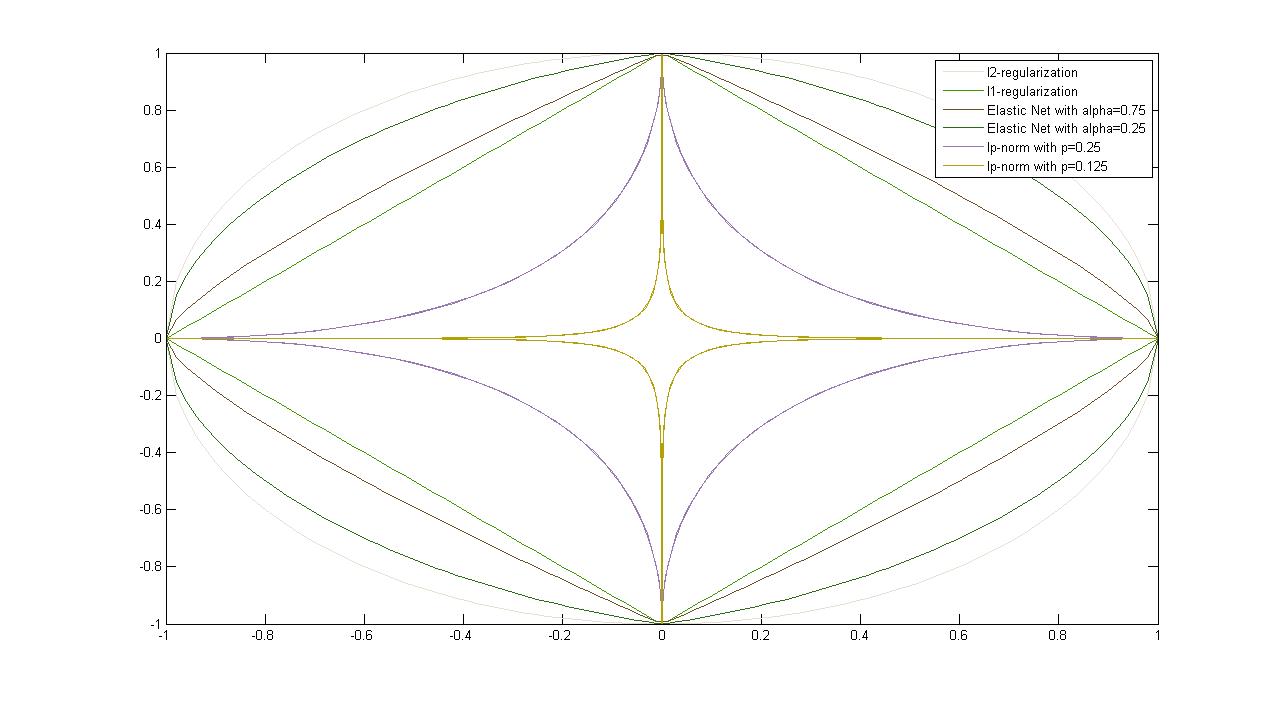
Figure 4.1: Plots of Common Classification Loss Functions - x-axis: $\left.h(\mathbf{x}_{i})y_{i}\right.$, or "correctness" of prediction; y-axis: loss value
| Loss $\ell(h_{\mathbf{w}}(\mathbf{x}_i,y_i))$ | Usage | Comments | |||||||||||||||
|---|---|---|---|---|---|---|---|---|---|---|---|---|---|---|---|---|---|
| 1.Hinge-Loss$max\left[1-h_{\mathbf{w}}(\mathbf{x}_{i})y_{i},0\right]^{p}$ | When used for Standard SVM, the loss function denotes margin length between linear separator and its closest point in either class. Only differentiable everywhere at $\left.p=2\right.$. | ||||||||||||||||
| 2.Log-Loss $\left.log(1+e^{-h_{\mathbf{w}}(\mathbf{x}_{i})y_{i}})\right.$ | Logistic Regression | One of the most popular loss functions in Machine Learning, since its outputs are very well-tuned. | |||||||||||||||
| 3.Exponential Loss $\left. e^{-h_{\mathbf{w}}(\mathbf{x}_{i})y_{i}}\right.$ | AdaBoost | This function is very aggressive. The loss of a mis-prediction increases exponentially with the value of $-h_{\mathbf{w}}(\mathbf{x}_i)y_i$. | |||||||||||||||
| 4.Zero-One Loss $\left.\delta(\textrm{sign}(h_{\mathbf{w}}(\mathbf{x}_{i}))\neq y_{i})\right.$ | Actual Classification Loss | Non-continuous and thus impractical to optimize. |
Some additional notes on loss functions:
Figure 4.1: Plots of Common Classification Loss Functions - x-axis: $\left.h(\mathbf{x}_{i})y_{i}\right.$, or "correctness" of prediction; y-axis: loss value
| Loss $\ell(h_{\mathbf{w}}(\mathbf{x}_i,y_i))$ | Comments | ||||||||||
|---|---|---|---|---|---|---|---|---|---|---|---|
| 1.Squared Loss $\left.(h(\mathbf{x}_{i})-y_{i})^{2}\right.$ |
|
||||||||||
| 2.Absolute Loss $\left.|h(\mathbf{x}_{i})-y_{i}|\right.$ |
|
||||||||||
|
3.Huber Loss
|
|
||||||||||
| 4.Log-Cosh Loss $\left.log(cosh(h(\mathbf{x}_{i})-y_{i}))\right.$, $\left.cosh(x)=\frac{e^{x}+e^{-x}}{2}\right.$ | ADVANTAGE: Similar to Huber Loss, but twice differentiable everywhere |

Figure 4.2: Plots of Common Regression Loss Functions - x-axis: $\left.h(\mathbf{x}_{i})y_{i}\right.$, or "error" of prediction; y-axis: loss value
| Regularizer $r(\mathbf{w})$ | Properties | ||||||||||
|---|---|---|---|---|---|---|---|---|---|---|---|
| 1.$l_{2}$-Regularization $\left.r(\mathbf{w}) = \mathbf{w}^{\top}\mathbf{w} = (\|{\mathbf{w}}\|_{2})^{2}\right.$ |
|
||||||||||
| 2.$l_{1}$-Regularization $\left.r(\mathbf{w}) = \|\mathbf{w}\|_{1}\right.$ |
|
||||||||||
| 3.Elastic Net $\left.\alpha\|\mathbf{w}\|_{1}+(1-\alpha)(\|{\mathbf{w}}\|_{2})^{2}\right.$ $\left.\alpha\in[0, 1)\right.$ |
|
||||||||||
| 4.lp-Norm often $\left.0<p\leq1\right.$ $\left.\|{\mathbf{w}}\|_{p} = (\sum\limits_{i=1}^d v_{i}^{p})^{1/p}\right.$ |
|

Figure 4.3: Plots of Common Regularizers
| Loss and Regularizer | Classification | Solutions | |||||||||||||||
|---|---|---|---|---|---|---|---|---|---|---|---|---|---|---|---|---|---|
| 1.Ordinary Least Squares $\min_{\mathbf{w}} \frac{1}{n}\sum\limits_{i=1}^n (\mathbf{w}^{\top}x_{i}-y_{i})^{2}$ |
|
|
|||||||||||||||
| 2.Ridge Regression $\min_{\mathbf{w}} \frac{1}{n}\sum\limits_{i=1}^n (\mathbf{w}^{\top}x_{i}-y_{i})^{2}+\lambda\|{w}\|_{2}^{2}$ |
|
|
|||||||||||||||
| 3.Lasso $\min_{\mathbf{w}} \frac{1}{n}\sum\limits_{i=1}^n (\mathbf{w}^{\top}\mathbf{x}_{i}-\vec{y_{i}})^{2}+\lambda\|\mathbf{w}\|_{1}$ |
|
|
|||||||||||||||
| 4.Logistic Regression $\min_{\mathbf{w},b} \frac{1}{n}\sum\limits_{i=1}^n \log{(1+e^{-y_i(\mathbf{w}^{\top}\mathbf{x}_{i}+b)})}$ |
|
|